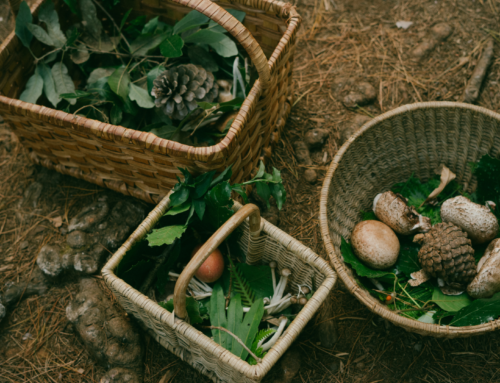Flowers are important to many people across the world, and that is large because they have a lot of practical uses. They can be used for beauty, decoration, and even for food. However, science has also made some discoveries about flowers in recent years.
In this blog article, you will read about how scientists finally figured out what makes flowers bloom, what plants need in order to grow healthy flowers, and why some types of flowers change colors over time.
The Science Behind It
From the time flowers are first formed in the soil, their science is constantly evolving. Different parts of the plant grow at different rates and interact with one another in intricate ways. This complex interaction between plant parts affects how flowers look, smell, and taste.
Flowers are made up of a series of organs that work together to produce color, fragrance, and nectar. Each organ has its own set of genes that control its growth and function. Scientists study these genes in order to learn more about flower development and evolution.
There are many different types of flowers, each with its own unique features and scientific secrets. Some examples are daisy flower petals that fold inward like origami paper; or rose petals that have microscopic barbs that help trap pollen. These features come from the flowers’ genes and DNA.
In addition to studying flower genes, scientists also study how plants interact with their environment. By understanding how plants respond to changing conditions, they can better understand how biodiversity works and predict future changes in our environment.
What is a Flower’s Lifecycle?
Flowers undergo a lifecycle that starts with the development of the flower’s petals. The petals are modified leaves and grow from the stem. As the petals grow, they secrete nectar, which helps attract pollinators.
The pollinators then move pollen from the male part of the flower to the female part, and the flowers begin to produce seeds. After flowering is complete, the flowers will wilt and eventually fall off.
What does a Flower Represent in Terms of Science?
Flowers are among the most iconic and recognizable features of nature. They are used to attract pollinators, who help spread pollen.
They also serve as indicators of a plant’s health and fertility. The science behind flowers is fascinating, and there is a lot that we still don’t know about them.
Here are some key discoveries about flowers that we’ve learned in recent years:
- A flower consists of five major parts: the stem, the leaves, the blossom, the ovary, and the seeds. Each part plays a specific role in the flower’s function. For example, the stem helps carry the flower away from danger, and the leaves provide sunlight and water for the plant to grow.
- Flowers come in all sorts of shapes and colors: which is why they’re so popular among humans. Some flowers have petals that look like blades or clubs, while others have petals that look like cups or bells. Some flowers have colorful spots on their petals, while others have long stripes or furrows on their petals (like roses). And finally, some flowers have both types of petals!
- Some flowers change their colors over time: sometimes gradually over time (like daffodils), sometimes quickly (like poppies), and sometimes even multiple
How to Add Flowers to Your Home?
Adding flowers to your home is a fantastic way to bring in beauty and color. Here’s a simple guide to get those blooms brightening up your space:
- Choose Your Flowers: Pick the type of flowers you fancy. Consider factors like how much light and warmth they need, as well as their size and color.
- Get the Right Pot: Once you’ve chosen your flower, grab a pot that fits it just right. Make sure it has enough space for the roots to spread comfortably.
- Planting Time: Use good-quality potting soil to plant your chosen flower in the pot. Follow the instructions for planting depth and spacing.
- Find the Perfect Spot: Place your potted flower in an area that matches its light and temperature preferences. Some flowers love sunlight, while others prefer shade.
- Water and Fertilize: Regularly water your flower, making sure not to drown it. Follow the recommended fertilization routine for your specific flower type.
- Enjoy the Blooms: Once your flowers start to bloom, kick back, and enjoy the beauty they bring to your home.
- Watch for Pests: Keep an eye out for common flower-damaging pests like aphids, mites, and thrips. If you spot any trouble, you can reach out to a company like Aptive Pest Control. They can help identify the pests and come up with a plan to send them packing.
What are the Benefits of Having Flowers around your home?
There are many benefits to having flowers around your home, both for the environment and for you. Flowers use less water than a hose and can help improve air quality by removing pollutants from the air. They can also provide beauty and tranquility in an often chaotic world.
Introducing new fragrant flowers to your garden can elevate your living space in numerous ways. The sweet scents wafting through the air can have a positive impact on your mood, reducing stress and promoting relaxation. You can easily enhance your surroundings and elevate your well-being with the simple addition of delightfully scented flowers. Find the perfect touch for your garden by looking for options like a fragrant bearded iris for sale, and turn your garden into a sweet-scented space that you can enjoy.
Here are some of the benefits of flowers:
- They use less water than a hose: A flower needs 1/10th of the water that a human does to survive. This means that flowers can help conserve water and reduce your irrigation bill.
- They remove pollutants from the air: Flowers use photosynthesis to convert sunlight into energy, which they then use to create oxygen. This process helps rid the atmosphere of harmful toxins like nitrogen oxide and carbon dioxide.
- They provide beauty and tranquility: Just as flowers help improve air quality, they can also add charm and visual appeal to your home. Having a variety of different types of flowers will give your home a natural look that is sure to please you and your guests.
How do Flowers get their Colors and Fragrances?
The colors and fragrances of flowers are due to the presence of petals, sepals, and pistils. Petals are the colorful parts at the top of a flower, and they’re made up of numerous small cells.
The cells in petals are arranged in a pattern called meristem, which is responsible for the plant’s flowers having their characteristic colors and fragrances.
Sepals are the colorful parts at the bottom of a flower, and they’re also made up of numerous small cells. The cells in sepals are arranged in a different pattern than those in petals, and this difference is what gives sepals their different color.
Pistils are the reproductive organs of flowers, and they contain the stamen (the male part) and pistil (the female part). The stamen has anthers that release pollen, which fertilizes the pistil. The pistil then grows a seed inside it.
Flowers use their fragrance to attract pollinators (tiny insects that help plants reproduce), but their color also attracts attention from potential mates.





Leave A Comment